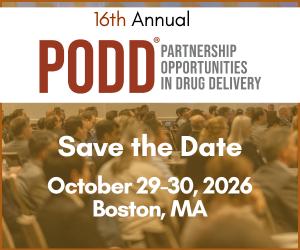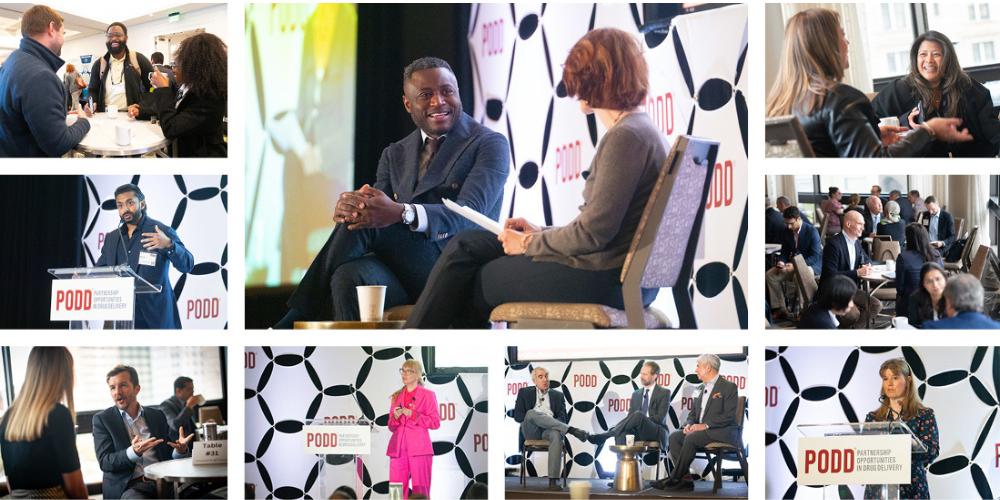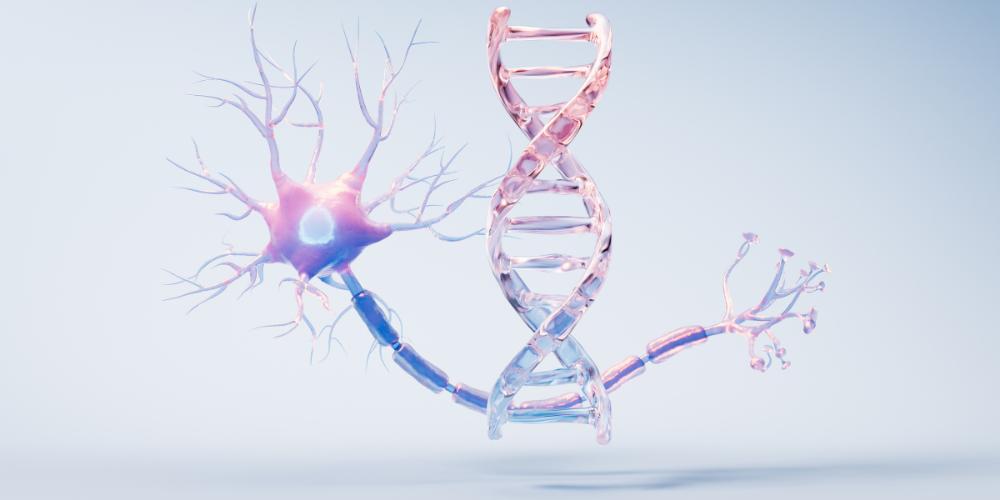
What is the work you’re leading at Genentech?
My day job now is to be Head of Protein Sciences, which includes overseeing the large molecule emerging modalities, the molecule discovery aspects, and protein technology groups. That includes structural biology, proteomics, and then more recently, informatics, supporting doing science and research.
I started as a crystallographer and a biochemist, so our projects are therapeutic area-agnostic. That’s one of the things I love about it: I’ve always gotten to work on all the different biologies Genentech works on. An early formative experience was leading an antibody team. Then there was a stage of my career where I did mostly small molecules, and I led two project teams. One of those was a collaboration with AbbVie; that’s the molecule that became Venclexta. That was an exciting experience: to see a molecule go into the clinic.
More recently, after that experience, I was on the small molecule leadership team, supporting the entire portfolio of small molecules, which was truly exciting. It was those experiences where I learned more about drug delivery for small molecules and the challenges that those programs can face.
I’d always had some level of involvement in large molecules and biologics, because if you were a structural biologist, you work on proteins and you end up knowing a lot about protein-based drugs. In the last 10 years or so, I’ve been on the proteins leadership team, responsible for the execution of all the biologics and many emerging modalities to support the gRED portfolio. That’s also a place where I enjoy seeing things across all the therapeutic areas.
Over my career, I’ve had one foot in the small molecule world, one foot in the large molecule world, and being agnostic on the biology. I enjoyed getting to think with the small molecule part of my brain and think with the large molecule part of my brain. But they all have delivery issues: what’s the difference between making a tool molecule and making a drug? A lot of times it’s the delivery. Can you dose it? Does it get to the right place?
Most recently, I’ve been working with a cross-functional delivery work stream to think about how we are applying it more broadly and do we think about tissue-specific delivery.
"I would say no good target ever goes away. If it’s important biology, we’ll be thinking about it for years."
You touched upon how delivery can address
challenging molecule properties. What does your
relationship look like with delivery teams?
It’s very much a back-and-forth. I work with them usually in the context of a project team. “We have this molecule; we want to get it to the eye.” We help them brainstorm what their challenges are. That’s where you become painfully aware that it’s not just making the molecule. If we’re going to give it to the eye in a pre-filled syringe, then viscosity is a problem.
It’s got to be low viscosity so that we can dose it with a small needle. That’s not something you’re thinking about usually if you’re not actually talking to the delivery teams. So that meant we had to invest in machines to measure viscosity, to sort our potential molecules and see which ones had the right profile.
So there’s a lot of back and forth with teams, trying to understand, “What is the killer experiment for this molecule?” So that’s where it comes up most day-today: helping teams figure out if they have a molecule that has legs to go into the clinic and to market, and if not, what we need to fix.
Delivery, and the aspects that it will take to make a molecule successful, comes up in these conversations or discussions. If we have a team looking at a new modality and we want to use an ASO and have it go somewhere besides the liver, what is that going to take? Maybe it’s a device; maybe it’s some formulation solution. Maybe we should try both and get a team going and see if we can solve that, because if we could it would make that modality a lot more useful more broadly.
How has working in such a varied pipeline impacted the way you approach your work?
You learn different things from different groups. For example, I was working on autoimmune diseases 15 years ago, and we were blocking cytokines. Then, five to 10 years ago, we started working on cancer immunology, and now we’re agonizing cytokine pathways. So we have worked on the same cytokine, first blocking it and now using it as a therapeutic. Blocking it is technically easier. They need to be very potent and have their own special properties, but you can usually get an antibody that blocks.
Making an agonist is harder. Making an agonist with a good therapeutic index is even harder. I’m glad that I started in the autoimmune area because it helped having learned some of that biology. It helps me now when I’m thinking about cancer immunology.
Biology is all connected. So you can say something is a neuro problem, but if you’re talking about microglia, maybe that’s also immunology. They’re not as separate biologically as therapeutic area charts make it. They each feed into each other, and the questions you learn to ask for one you can apply to the other. You always want to know, “How am I going to select my patients?” or “How am I going to know if my drug is working? What’s my PD marker?” You could get a feel for what is the tapestry of biology, how you’re tweaking it by intervening and how that might affect things in different parts of the body or different indications.
"Over my career, I’ve had one foot in the small molecule world, one foot in the large molecule world, and being agnostic on the biology."
Touching upon the example of cytokines, are there
other areas in research that have shifted similarly?
I would say no good target ever goes away. If it’s important biology, we’ll be thinking about it for years. Our first ideas may not be the best way to take advantage of that biology therapeutically, but by doing it and investing in it, we’re more prepared later.
What has surprised me more is less the changing interest in biology over time, but more how technologies or informatics have changed things. For example, AI/ ML: 10 years ago, the idea of needing a computational group in antibody engineering to help us think about how to design molecules didn’t seem essential. Yes, we need informatics; we need to track our work; we need to know where samples are.
But in the last few years, I’ve been amazed by how quickly certain technologies have taken off. So in my own area of structural biology, Cryo-EM went from being, “That’ll help with one project every now and again” to something we’re now using all the time to support small molecule projects much more quickly than I expected. We invested in it early and I thought it was going to be more useful in our basic research or epitope mapping for large molecules, and that we would get to supporting small molecules much later. It turned out the reverse was true: it became more impactful for small molecules quicker because we can tackle things that we hadn’t previously been able to tackle.
Similarly, look at NGS sequencing, which suddenly is giving us immense piles of data.
That’s the same data that AI/ML needs. And at the same time, the PDB has gotten so well-populated that we have rich datasets that could support AI/ML.
I’ve been amazed to see how quickly those fields changed, or how quickly something like NGS sequencing, single-cell RNA-seq, have gone from being an “interesting technology” to something that’s in every biology presentation that I see. It’s the way we’re understanding how cells differ from each other or differ over time. The changes in technology, and the questions they’ve permitted us to ask, has surprised me more than that of the evolution of biology.
How does moving into more complex drugs, precision medicine, cell and gene therapy, change or impact your work or focus?
Let me answer that in two ways. So as a person who runs technology groups, some of those technologies we support and we need to evaluate quickly. There’s always new technologies, there’s always more you could do, but what can you do more that will have an impact? Will this have an impact on our ability to identify good targets and good potential medicines?
You must have good people with technology who have a good sense of if this is something we should implement or something we should assess or something we should check out externally and then implement later if it’s useful.
On the other side, where I think in terms of molecule discovery itself, where I think it makes a bigger impact is coming up with the targets. You need the molecule or the modality, but if you’re not applying it to the right target, none of the rest of that matters. So anything that will help biologists more deeply understand biology and identify the right targets for intervention benefits us.
You touched on focusing on patient preference and patient ease in your presentation. How have you seen that emphasis evolve?
The patient is who motivates us. The specific question of when patient convenience starts coming up: that comes up in research as we’re discovering the molecule. That’s the motivation for having long-acting molecules so they don’t have to come into the medical offices so often.
I can think of specific programs where we had two molecules, one of which would have to be lyophilized and reconstituted in the doctor’s office. No one really wanted to go that route; everyone wanted the pre-filled syringe because it would be more convenient for the doctor and the patient.
Or we think about devices for at-home administration for therapies for which that’s appropriate. You need a device and subcutaneous formulation for that. That’s also for patient convenience, so they can use it at their own home and don’t have to go into a doctor’s office.








